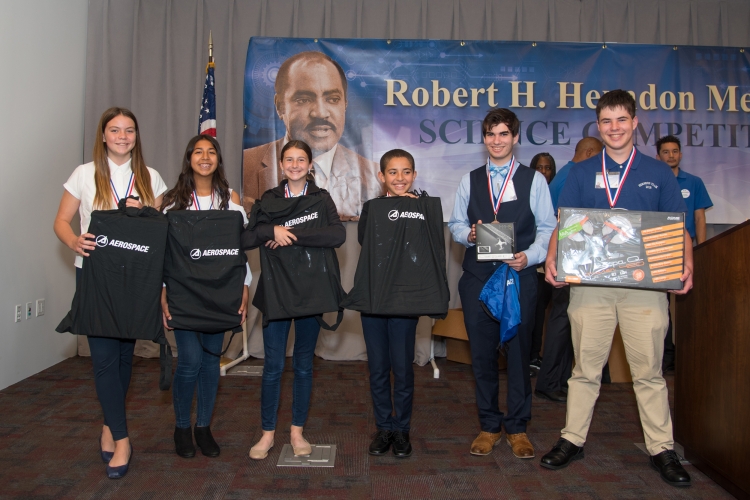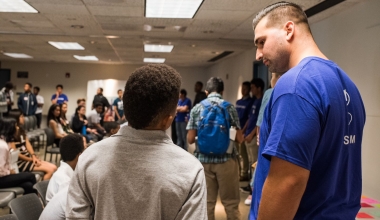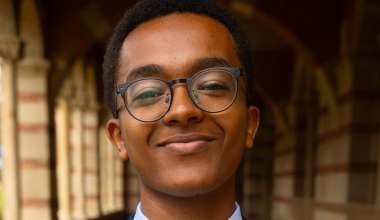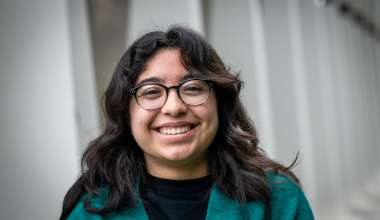“Lines of code? LINES OF CODE?? I don’t need no stinkin’ lines of code!” shrieked the autonomous nanobot, before it snapped its fingers and scooted off in a righteous huff.
Okay, that part didn’t happen—but, thanks to the dogged commitment and determination of some brave and hard-working students, autonomous nanobots did indeed make an appearance in The Aerospace Corporation’s 41st annual Robert H. Herndon Memorial Science Competition. These nanobots shared an equal spotlight with ionic thrusters, optical sensors, passive energy storage, color-based candy sorting (but of course), fuel-efficient cars, and more.
The middle- and high-schoolers who participated in the competition—which occurred on May 17 at Aerospace’s East Coast office in Chantilly, VA, and on May 24 at the El Segundo, CA headquarters—had a blast showcasing their leading-edge experiments and inventions. These experiments and inventions—both practical and aspirational—drew upon the traditional disciplines of electrical, mechanical, structural, and environmental engineering, as well as biology, material science, and physics.
Each team was assigned an Aerospace employee who acted as an adviser. Students learned to pitch their ideas to the judge—a vital skill for any career in science and engineering. In addition to tabletop demonstrations, the competition included a separate essay component. The judging panels included representatives from both Aerospace and the U.S. Air Force.
Competing for the first time was the Girls Academic Leadership Academy, a new STEM-centered, all-girls school in the Los Angeles Unified School District.
Designed to stimulate and promote interest among students in engineering and STEM subjects, this competition also aims to increase interest and engagement for the next generation of space leaders.









